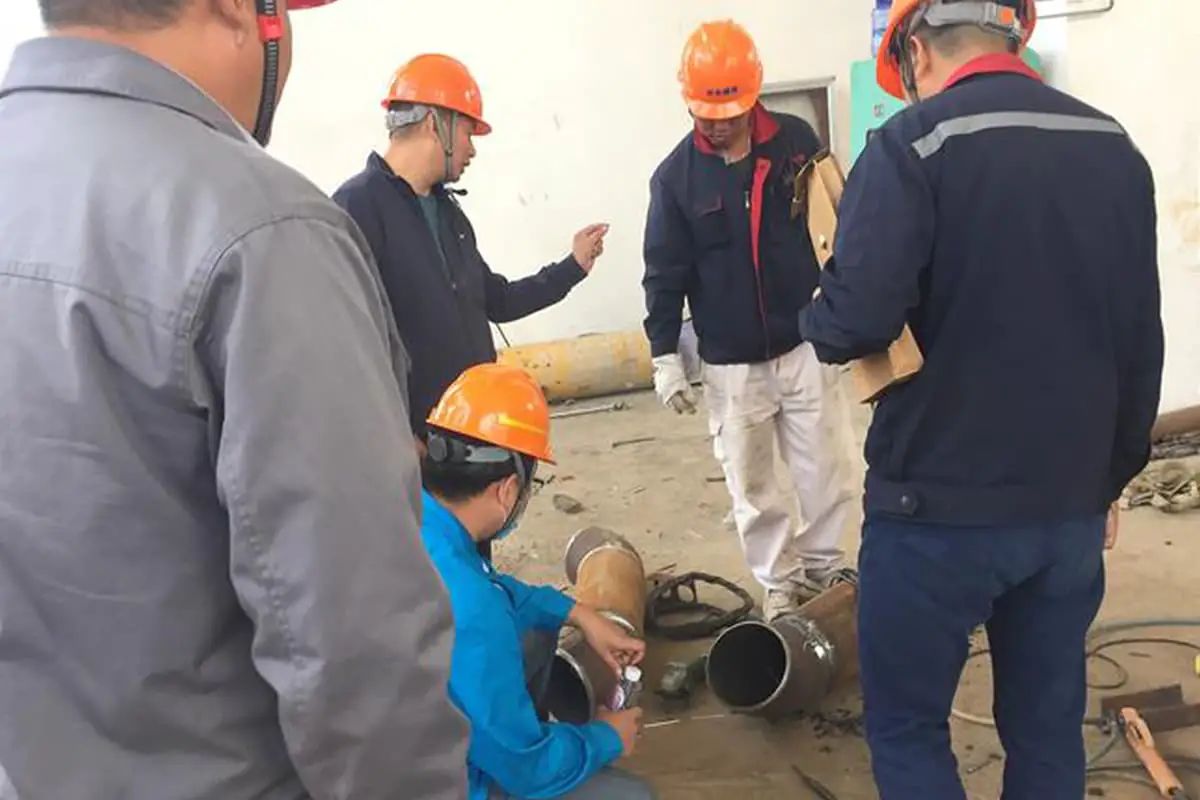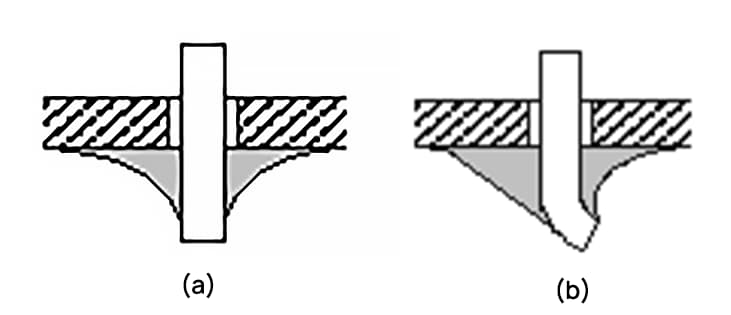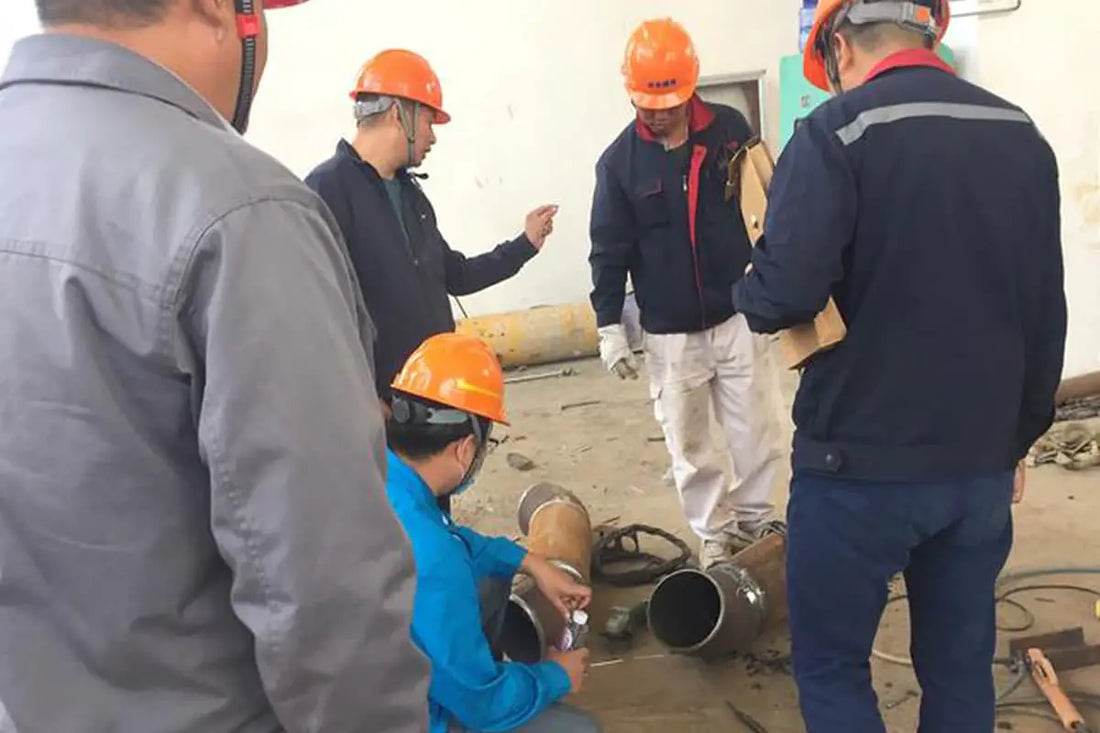Welding is a significant technological process in the assembly of electronic products and is a fundamental step in their manufacturing.
It is widely used in the experimentation, tuning and production of electronic products and constitutes a substantial workload. The quality of welding directly influences the quality of the product.
Most failures in electronic products, in addition to component problems, are predominantly due to poor soldering quality. Therefore, mastering proficient welding operation skills is essential to product quality.

I. Quality requirements for welding points
Quality requirements for welding points should encompass good electrical contact, robust mechanical contact and aesthetic appearance.
The most critical aspect of ensuring spot welding quality is to avoid cold solder joints.
1. Reliable electrical connection
Soldering is the primary means of physically making electrical connections in electronic circuits. Welding connections are not obtained by pressure, but by forming a solid alloy layer during the welding process to achieve the purpose of electrical connection.
If the weld is merely piled up on the surface of the welded parts or only a small part forms an alloy layer, it may be difficult to detect any problems with the weld point during initial testing and operation.
Such a welding point can pass current in the short term, but with changing conditions and the passage of time, the contact layer oxidizes, separates and creates intermittent or non-functioning circuits.
Looking at the outside of the welding point may still look good, which is a major concern when using electronic instruments and a problem that should be taken seriously during product manufacturing.
2. Adequate mechanical strength
Welding is not only used for electrical connection, but also fixes components and ensures mechanical connection. To ensure that welded parts do not fall or come loose when subjected to vibrations or impacts, the welding points must have adequate mechanical resistance.
Generally, this can be achieved by bending the lead terminals of the components to be soldered and then soldering.
Lead-tin alloy, used as soldering material, has relatively low strength, with the tensile strength of commonly used lead-tin soldering materials being about 3-4.7kg/cm2, only 10% of common steel.
To increase strength, a sufficient connection area is required. If it is a cold solder joint with the solder simply stacked on the solder pad, it will have no strength.
3. Smooth and elegant appearance
A good soldering point requires an adequate amount of solder, has a metallic luster, has no spikes or bridges, and does not damage the insulation layer of the wire or adjacent components. A good appearance reflects the quality of the welding.
Note: The presence of metallic luster indicates adequate welding temperature and alloy layer formation, which is not just a requirement for aesthetic appearance.
The appearance of a typical spot weld is shown in Figure 1, with the following common characteristics:
- The shape is symmetrically similar to a skirt, centered around the welding wire.
- The welding material forms a semi-arched concave surface, with a smooth joint between the welding material and the welded part, and the contact angle is as small as possible.
- The surface is shiny and smooth.
- There are no cracks, holes or slag inclusions.

In addition to visual inspection (or with the aid of a magnifying glass or microscope) to check whether the welding point meets the above standards, welding quality inspection also includes: lack of welds; pointed solder; solder-induced short circuits between wires (i.e., “bridging”); damage to the insulation of wires and components; yarn modeling; welding spatter.
During inspection, in addition to visual checks, methods such as tapping, tweezer probing and wire pulling are used to check for defects such as wire breakage and pad peeling.
II. Welding quality inspection methods
1. Visual inspection
Visual inspection involves checking the quality of the weld from an external perspective to identify any defects at the weld point.
The main contents of visual inspection include:
1. If there are missing welds, that is, weld points that should be welded, no.
2. The brightness of the soldering point.
3. Whether there is enough solder at the soldering point.
4. Whether there are residual fluxes around the welding point.
5. If there are continuous welds and if the pads have slipped.
6. If the welding point has cracks.
7. If the welding point is irregular; whether there is a sharp phenomenon at the welding point.

Figure 2 shows the correct shape of the weld point. In the figure, (a) is the shape of a straight inserted weld spot and (b) is the shape of a semi-bent weld spot.
2. Touch inspection
Touch inspection mainly refers to the existence of loose or poorly welded components when touched.
Use tweezers to hold the component cable and gently pull it to see if there is any play. If the weld on the top falls off when the weld point is shaken.
3. Boot Inspection
Once the external inspection is completed and the wiring is confirmed to be correct, the power-on inspection can be performed, which is critical to testing circuit performance.
If the external inspection is not conducted rigorously, the initial inspection will not only be more difficult, but it can also damage equipment and cause safety accidents.
For example, if the power supply connection is not soldered well, it would be found that the device cannot be turned on during the power-on inspection, making verification impossible.
Boot inspection and root cause analysis
Electrification Inspection
(1) Component failure
- Fault: The soldering iron is experiencing an electrical leak and has suffered damage due to overheating.
- Performance degradation: The soldering iron has an electrical leakage problem and has been damaged due to overheating.
(2) Poor electrical conductivity
- Short circuit: Bridge and solder spatter.
- Circuit break: Open solder joint, rosin flux residue, cold soldering and poor contact in sockets.
- Connected intermittently: wire breakage, pad peeling and so on.
Start-up inspections can reveal many small defects, such as circuit bridges that are not visible to the naked eye. However, it is challenging to detect potential problems such as dry internal welding.
Therefore, the fundamental solution lies in improving the skill level of the welding operation rather than leaving the task to the inspection process.
The relationship between potential failures that may occur during initial inspection and welding defects is illustrated in Figure 3 for reference.
III. Common Defects and Analysis of PCBA Solder Joints
There are numerous causes of welding defects. Given certain materials (solder and flux) and tools (soldering iron, jig), the methods used and the operator's sense of responsibility become determining factors.
Common defects observed in PCBA component placement and solder joints are shown in Tables 1 and 2.
These tables list the appearance, characteristics, and dangers of common solder joint defects, along with an analysis of their causes.
Table 1: Analysis of common solder joint defects
| Defect in the welding point | Design features | Hurt | Root cause analysis |
Fake Welding 
|
There is a distinct black line between the solder and the lead of the component or copper foil, with the solder receding toward the edge. | Unable to function properly. | 1. Component terminals have not been properly cleaned, inadequately tinned, or solder has oxidized.
2. The printed circuit board was not completely cleaned and the quality of the applied flux was inferior. |
| Welding short circuit |
Excessive soldering led to a short circuit due to solder bridging between adjacent points. | Electrical short circuit. | 1. The welding technique is incorrect.
2. There is excess solder. |
| bridge |
Adjacent wires connected. | Electrical short circuit. | 1. Component cables remain long after cutting.
2. The terminals of the residual components have not been erased. |
Scratch Motion Welding 
|
There are cracks, rough like crumbled bread, with splits at the joints. | The intensity is low, either not operating or operating intermittently. | When the weld is still wet and subject to movement. |
Insufficient soldering 
|
The welding area is less than 75% of the pad, and the weld has not formed a smooth overlapping surface. | Insufficient mechanical resistance. | 1. Poor solder flow or premature removal of the welding wire.
2. Insufficient flow. 3. The welding duration is too short. |
Excessive soldering 
|
The weld surface is convex. | Weld waste can hide defects. | Transfer withdrawal was delayed. |
Overheating 
|
The soldering point appears white, without metallic shine, with a very rough surface. | The solder pad has a tendency to peel off, resulting in reduced strength. | The power of the soldering iron is excessive, resulting in prolonged heat-up times. |
| Cold welding |
The surface appears as tofu-like granules and can sometimes be cracked. | Resistance is low and conductivity is weak. | Shake the workpiece before the weld solidifies. |
| No absorption |
When the contact angle exceeds 90 degrees, the solder cannot spread or cover, similar to a drop of oil resting on a wet surface. | Resistance is low and conductivity is weak. | The welded metal surfaces are not symmetrical, nor is the heat source itself. |
Laxity 
|
The conductors of the wires or components may change. | Poor conductivity or no conductivity. | 1. The lead moved before the solder solidified, causing a gap.
2. Lead has not been treated (poor wetting or no wetting). |
| Pulling to a point |
Emergence of the avant-garde. | The appearance is below average, which can easily lead to bridge occurrences. | A dirty soldering iron or one removed prematurely before the solder site reaches the solder's melting point can result in solder sticking and subsequent formation as it is removed. |
| Pinhole |
Visual inspection or a low-power magnifying glass may reveal holes in the copper foil. | Insufficient strength may cause weld points to become subject to corrosion. | Contamination of welding materials, part materials and the environment. |
Copper Foil Delamination 
|
The copper foil is removed from the printed circuit board. | The circuit board has been damaged. | The welding duration is very long. |
Table 2: Analysis of SMT solder joint patterns and defects for surface-mounted components.
| Project | Diagram | Key points | Inspection Tools | Judging criteria: |
| 1. Position of the part. |  |
The amplitude 'W' of the common electrode covers more than half of the conducting surface. Important: Visual inspection must be used to identify the displacement of the component position, and not by checking with a tester. Instead, use a magnifying glass for direct observation. | Calipers | Over half |
| 2. Position of the part. |  |
More than half of the length E of the common electrode is covered by the conducting surface. Caution: Visual inspection should be used to determine the position displacement of the part, not confirmed with a tester and verified with a magnifying glass. | Calipers | Over half |
| 3. Position of the part. |  |
In terms of inclination of the articulated parts, it is sufficient to cover more than half of the amplitude W of the joint electrode on the conductive surface. Note: Rely on visual inspection for discrepancies in part placement and avoid using a tester for confirmation; instead, use a magnifying glass for direct observation. | Calipers | Over half |
| 4. Weld quantity. |
 1/2F |
The electrode is soldered with tin, the length of which exceeds half the height F and half the width W. | Calipers | Over half |
| 5. Weld quantity. |  |
Weld the joint components in the long direction, from the end face of the joint electrode, with a weld thickness greater than 0.5 mm. For example, G. | Calipers | Above 0.5mm |
| 6. Weld quantity. |  |
The height of the weld must be less than 0.3 mm above the surface of the joint component. | Dial indicator | Below 0.3mm |
| 7. Weld quantity. |  |
Welding on the articulated parts cannot be overlapped, as in the “I” shape. | Visual inspection | Cannot be stacked on top |
| 8. Part adhesion. |
 Quality product |
There is no adhesive between the joint component electrode and the printed circuit board. | Visual inspection | Cannot be under the electrode |
 Quality product |
||||
| 9. Part adhesion. |
 Defective product |
There is no adhesive between the joint component electrode and the printed circuit board. | Visual inspection | Cannot be under the electrode |
| 10. Part adhesion. |
 It must not contain any binders. |
Adhesives should not be applied to the electrode section of joint components. | Visual inspection | Cannot be adhesive |
| 11. Position of the part. |
 Don't touch G |
The positioning of joint components must not be offset or tilted to touch adjacent conductors. For aspects that cannot be determined visually, use testing instruments. | Visual inspection | I can't make contact |
| 12. Weld quantity. |
 Weld burst |
The solder must not exceed the width of the conductive surface. | Visual inspection | Cannot overflow |
| 13. Position of the part. |  |
More than half the width J of the IC component legs is above the conductive surface. | Calipers | Over half |
| 14. Position of the part. |  |
More than half the length, K, of the IC component legs makes contact above the conductive surface. | Calipers | Over half |
| 15. Position of the part. |  |
The displacement of the component position in relation to the adjacent conductor must be ≥0.2mm; must not come into contact with the adjacent conductor. | Visual inspection | I can't make contact |
| 16. Unstable leg. |

|
For items with raised ends, the elevation must be less than 0.5 mm. | Calipers | Below 0.5mm |
| 17. Unstable leg. |  |
For items where the base is raised, the rise at the base must be less than 0.5mm. | 0.5mm gauge | Below 0.5mm |
| 18. Unstable leg. |

|
For items where the entire foot is elevated, the elevation should be less than 0.5mm. | 0.5mm gauge | Below 0.5mm |
| 19. Unstable leg. |

|
The solder height from the printed board surface to the solder peak is less than 1 mm. | Calipers | Below 1mm |
| 20. Unstable leg. |

|
The height of the weld attached to the component leg is less than 0.5 mm. | Calipers | Below 0.5mm |

























































